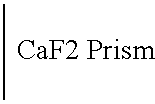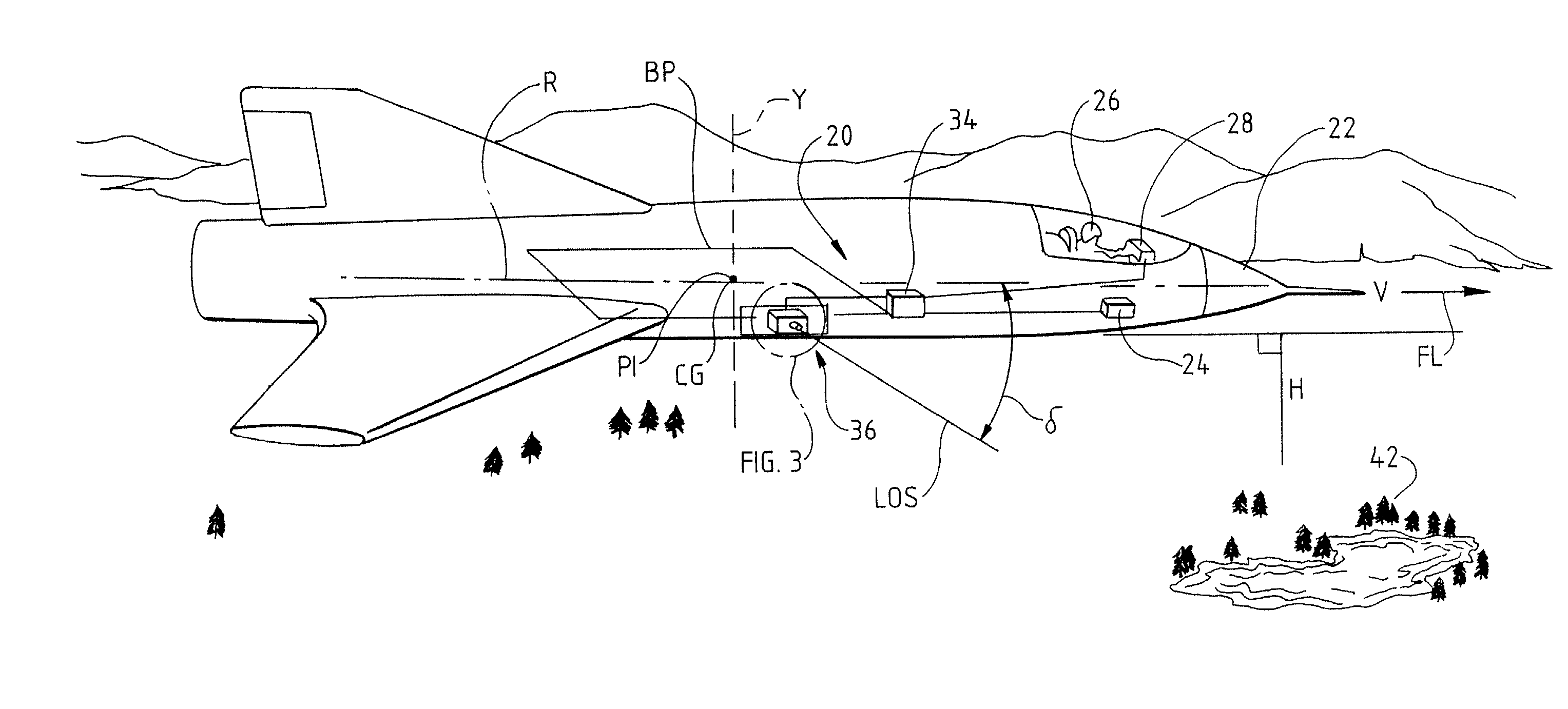Dual band framing reconnaissance camera
a reconnaissance camera and band framing technology, applied in the field of aerial reconnaissance photography and camera systems, can solve the problems of distorted images, and inability to achieve and the scanning system inherently is prone to creating geometrically and geospatially distorted images
- Summary
- Abstract
- Description
- Claims
- Application Information
AI Technical Summary
Benefits of technology
Problems solved by technology
Method used
Image
Examples
Embodiment Construction
[0056] Overview and Method of Operation:
[0057] Referring now to FIG. 1, an aerial reconnaissance camera system 20 in accordance with a preferred embodiment of the invention is shown installed in a reconnaissance aircraft 22 flying over a terrain of interest 42 at an altitude H and with forward velocity V, moving in a direction of flight FL. The aerial reconnaissance camera system 20 includes a camera 36, shown in greater detail in FIGS. 2A-2C and 3-5, a camera control computer 34 and associated electronics described in further detail in FIGS. 17 and 19. The camera control computer receives certain navigational information from the aircraft avionics system 24, including current aircraft velocity and height data. Additional camera system inputs may come from a console 28 in the cockpit, such as start and stop commands or camera depression (roll angle) settings.
[0058] The aircraft body defines a roll axis R, a pitch axis PI and a yaw axis Y passing through the center of gravity CG of t...
PUM
 Login to View More
Login to View More Abstract
Description
Claims
Application Information
 Login to View More
Login to View More - R&D
- Intellectual Property
- Life Sciences
- Materials
- Tech Scout
- Unparalleled Data Quality
- Higher Quality Content
- 60% Fewer Hallucinations
Browse by: Latest US Patents, China's latest patents, Technical Efficacy Thesaurus, Application Domain, Technology Topic, Popular Technical Reports.
© 2025 PatSnap. All rights reserved.Legal|Privacy policy|Modern Slavery Act Transparency Statement|Sitemap|About US| Contact US: help@patsnap.com



